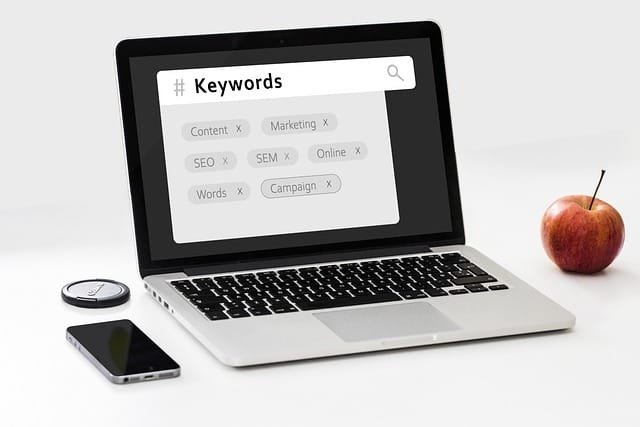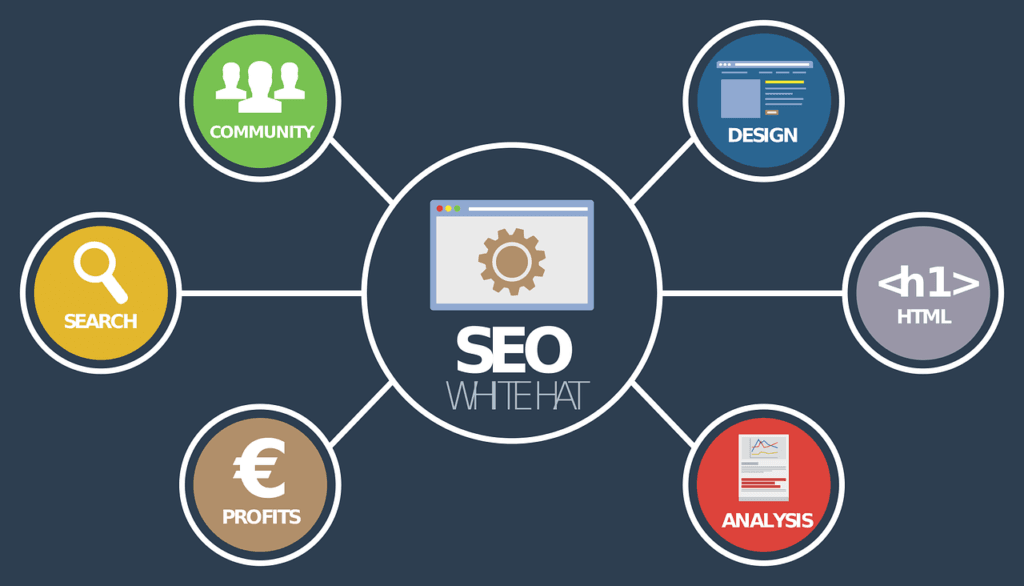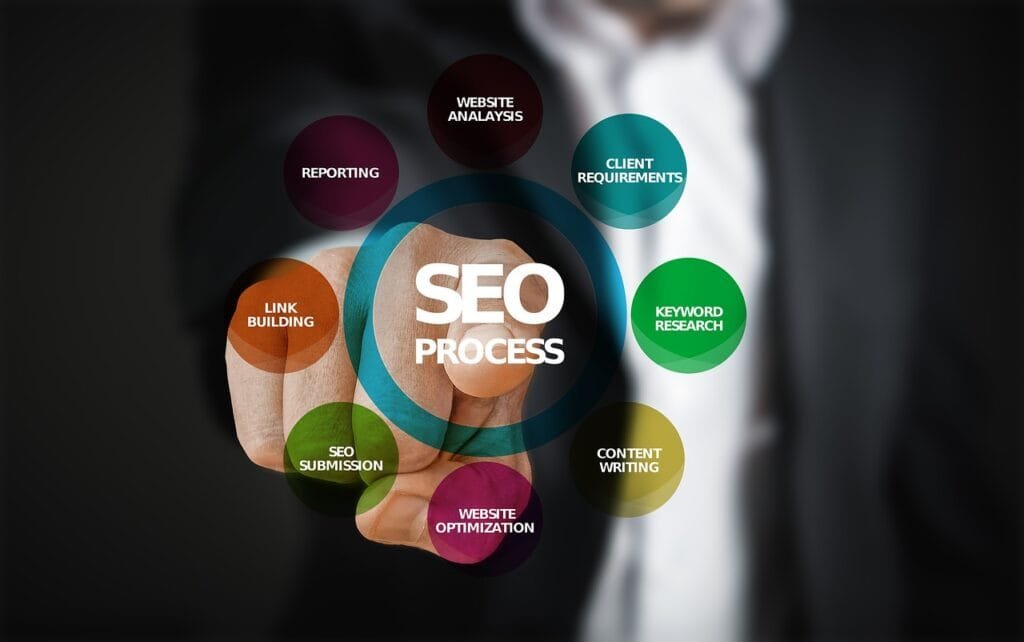This Article has been revised, edited and added to, by Poulomi Chakraborty.
- The Visual Web: Why Infographics Matter
- Laying the Foundation: Infographic Keyword Research Essentials
- Understand Your Core Message
- Expanding the Keyword Horizon
- Competitor Analysis
- Balancing Broad and Niche Keywords
- Understanding Search Intent for Effective Keyword Strategy
- Integrating Long-Tail Keywords for Niche Targeting
- Synthesizing Keyword Research with Visual Data Trends
- Harnessing Semantic Search for Broader Visibility
- Infusing Keywords: Making Your Infographic SEO-Friendly
- Titles and Headers: The First Point of Contact
- Image Metadata: Behind-the-Scenes Optimization
- Accompanying Content: Boosting Context
- Social Sharing Buttons: Encouraging Virality
- Crafting Keyword-Integrated Narratives
- Optimizing the Visual Elements with Keywords
- Leveraging Keywords in the Supporting Web Environment
- Utilizing Keywords for Cross-Linking and Contextual Relevance
- Promotion and Distribution: Amplifying Your Infographic's Reach
- Utilize Your Own Platforms
- Guest Posting and Collaborations
- Infographic Directories
- Strategic Timing for Release and Sharing
- Leveraging Influencer Partnerships for Enhanced Distribution
- Paid Advertising Campaigns to Boost Visibility
- Multi-Channel Integration for Comprehensive Coverage
- Persistent Monitoring and Agile Response Strategy
- Tracking Success: Analytics and Feedback Loop
- Monitor Key Metrics
- Iterative Improvements
- Establishing Key Performance Indicators (KPIs) for Infographic Success
- Integrating Advanced Tracking Tools for Comprehensive Insights
- Creating a Feedback Mechanism for Continuous Improvement
- Utilizing A/B Testing to Refine Approaches
- Analyzing Competitor Performance to Benchmark Success
- Emerging Trends: Staying Ahead in the Infographic Game
- Interactive Infographics
- Mobile Optimization
- Integration of Augmented Reality (AR) and Virtual Reality (VR)
- Embracing the Power of Animated Infographics
- Leveraging Data Integration for Real-Time Relevance
- Incorporating User-Generated Content for Authenticity
- Exploring Voice-Activated Infographics for Accessibility
- Challenges in Infographic SEO and Overcoming Them
- Over-optimization: Striking a Balance
- Staying Updated: The Ever-Changing SEO Landscape
- Diverse Audience: One Size Doesn't Fit All
- Navigating the Complexity of Visual Content Recognition
- Balancing Aesthetic Appeal with SEO Efficiency
- Overcoming Resource Limitations for Regular Content Updates
- Dealing with the Evolving Nature of SEO
- In Conclusion: Infographics as Pillars of Modern Content Strategy
In the digital age, content consumption patterns are rapidly evolving. Amidst the deluge of text-based content, visual elements like infographics stand out, offering bite-sized, visually compelling insights. For startups, infographics can be a game-changer, condensing complex data into easily digestible formats. However, just creating a stunning infographic isn’t the endgame; it needs to be discoverable. Here’s where the often-underestimated realm of keyword research for infographics comes into play.
In a world dominated by visual content, understanding how to optimize infographics for maximum visibility is a necessity for startups. Journey with us as we demystify the strategies to ensure your infographics don’t just look good but also reach the right eyes.
The Visual Web: Why Infographics Matter

Before diving into the nitty-gritty of keyword research, let’s appreciate the significance of infographics in today’s digital landscape.
Breaking Information Overload
Every day, users are bombarded with vast amounts of information. Infographics distill this data, offering:
- Quick Insights: A glance at an infographic can provide what might take paragraphs to explain.
- Retention Boost: Studies suggest that visual information tends to be retained better than textual data.
Shareability: Viral Potential
Infographics are share-worthy:
- Social Media Friendly: Their format makes them perfect for platforms like Pinterest, Instagram, or Twitter.
- Embeddable: Many websites and blogs embed third-party infographics, increasing reach and backlinks.
Strengthening Brand Recognition through Visual Consistency
In the landscape of digital marketing, establishing a strong and recognizable brand identity is crucial for startups. Infographics play a pivotal role in this endeavor by providing a consistent visual theme that can be easily identified by your audience.
By incorporating your brand’s color scheme, logos, and typography into your infographics, you create a visual signature that enhances brand recall. Each infographic becomes a reinforcement of your startup’s identity, ensuring that your audience connects the content with your brand, no matter where they see it.
Leveraging Infographics for Complex Storytelling
Infographics are not just tools for simplifying data but powerful storytelling devices that can convey the narrative of your brand, its products, and its values. For a startup, the ability to tell a compelling story about innovative solutions or the impact of your products can differentiate your brand in a crowded market.
Use infographics to weave intricate stories about your startup’s journey, the problems you solve, and the unique approaches you employ. This method not only makes your content more engaging but also helps to establish an emotional connection with your audience, which is essential for customer loyalty and brand advocacy.
Strategic Placement: Maximizing Impact Across Digital Touchpoints
The strategic placement of infographics across various digital channels can amplify your startup’s visibility and engagement rates. Instead of confining your visual content to your website, consider its impact when placed in strategic locations:
- Landing Pages: Utilize infographics on landing pages to quickly communicate the value propositions of your offerings. A well-designed infographic can be the difference between a conversion and a bounce, making it a critical element in your marketing funnels.
- Email Campaigns: Incorporate infographics into email marketing campaigns to break the monotony of text and to boost engagement rates. Emails with visual elements like infographics have a higher click-through rate as they are more engaging and easier to consume than text alone.
- Digital Ads: Use elements of your infographics in digital advertisements. These snippets can serve as eye-catching visuals that draw viewers into clicking the ad, increasing the effectiveness of your paid campaigns.
Fostering Thought Leadership with Data-Driven Insights
For startups looking to establish credibility in their industry, infographics are an excellent medium for presenting data-driven insights that showcase expertise and thought leadership. By regularly publishing well-researched and beautifully designed infographics that address current trends, forecasts, and innovations in your industry, your startup can become a go-to resource for valuable information.
This not only enhances your credibility but also increases your content’s chances of being shared among industry peers and on professional networks like LinkedIn, which can lead to greater exposure and business opportunities.
Laying the Foundation: Infographic Keyword Research Essentials
Like any content piece, infographics need a strategy. And it all starts with keyword research.
Understand Your Core Message
Before you delve into keywords, clarity on your infographic’s core message is pivotal:
- Central Theme: Is your infographic about “The Evolution of E-commerce” or “The Impact of Vegan Diets on Health”?
- Target Audience: Who are you addressing? Tech enthusiasts? Health-conscious individuals? Understand their search behavior.
Expanding the Keyword Horizon
With a central theme in mind, it’s time to branch out:
- Brainstorm: Consider possible search queries related to your theme.
- Keyword Tools: Platforms like Ubersuggest or SEMrush can help expand your list, providing variations and related terms.
- Visual Keywords: Since infographics are visual, consider terms like “chart”, “diagram”, or “visual guide” in conjunction with your topic.
Competitor Analysis
Sometimes, a sneak peek into competitors’ strategies can be enlightening:
- Find Popular Infographics: Tools like Buzzsumo can identify popular infographics in your niche.
- Analyze Keywords: Check the titles, descriptions, and any accompanying text to understand the keywords they target.
Balancing Broad and Niche Keywords
While broad keywords might offer vast reach, niche keywords can provide targeted visibility:
- Broad Appeal: Terms like “E-commerce trends” can attract a wide audience.
- Niche Focus: “E-commerce trends in sustainable fashion” narrows down the audience, ensuring more targeted engagement.
Understanding Search Intent for Effective Keyword Strategy
Delving deeper into the essence of keyword research for infographics, it’s imperative for startups to grasp the concept of search intent. Search intent refers to the underlying purpose behind a user‘s search query. By understanding whether your audience is seeking information, looking to make a purchase, or simply navigating to a specific site, you can tailor your infographics to align with these intents.
For example, if your target audience primarily seeks educational content, your keywords should reflect informational intent, such as “how-to,” “guide,” or “tips.” This strategic alignment ensures that your infographics not only attract views but also fulfill the viewers’ needs, increasing the relevance and value of your content in their eyes.
Integrating Long-Tail Keywords for Niche Targeting
While broad keywords might drive a larger volume of search traffic, long-tail keywords — those specific and often longer phrases — can significantly improve the quality of traffic and engagement. Startups, with typically more defined niches, can benefit immensely from incorporating long-tail keywords into their infographics.
These keywords are less competitive yet highly targeted, which means they can attract an audience that is more likely to engage deeply with the content and take desired actions. For instance, instead of using a broad term like “diet tips,” a more specific long-tail keyword like “keto diet tips for beginners” can attract a more defined and interested audience.
Synthesizing Keyword Research with Visual Data Trends
To enhance the effectiveness of your keyword strategy, it’s beneficial to synthesize traditional keyword research with the analysis of visual data trends. Tools such as Google Images’ search results can provide insights into which types of visual content are most popular and engaging for specific keywords.
By analyzing the images that rank highest for your targeted keywords, you can discern patterns and elements that resonate with audiences, such as color schemes, layout preferences, or commonly used icons. This knowledge allows you to design your infographics not only to be SEO-friendly but also visually appealing to your target demographic, enhancing both discoverability and engagement.
Harnessing Semantic Search for Broader Visibility
The evolution of search engines into more semantic, context-aware systems means that startups need to consider not just direct keyword matches but also the related topics and terms that search engines associate with those keywords. Incorporating a semantic layer into your keyword strategy can broaden the visibility of your infographics.
For example, if your infographic is about “sustainable living,” also include related terms like “eco-friendly homes,” “green energy,” and “zero-waste tips.” This approach ensures that your content can appear in a wider array of search queries, tapping into related interests and discussions, and broadening your potential audience base.
Infusing Keywords: Making Your Infographic SEO-Friendly

Creating a visually compelling infographic is an art, but ensuring it’s discoverable needs a touch of science. Let’s dive into how you can integrate keywords seamlessly.
Titles and Headers: The First Point of Contact
Much like a blog post or video, the title of your infographic plays a pivotal role:
- Descriptive Titles: Ensure the title concisely represents the content. Instead of “E-commerce Growth,” a title like “E-commerce Growth Trends in 2023” is more descriptive and keyword-rich.
- Subheaders: If your infographic is long and segmented, use keyword-optimized subheaders to break it into sections.
Image Metadata: Behind-the-Scenes Optimization
While search engines can’t “read” images, they certainly understand the associated metadata:
- File Name: Before uploading, rename your infographic file. Instead of a generic “image1.png,” use a descriptive, keyword-rich name like “E-commerce_Growth_Trends_2023.png.”
- Alt Text: This is a brief description of your infographic, crucial for SEO and accessibility. Ensure it’s concise, descriptive, and integrates your target keyword.
Accompanying Content: Boosting Context
While your infographic will be the star, accompanying it with text can boost its SEO potential:
- Introductory Text: A brief introduction can set the context and be an excellent place to infuse keywords naturally.
- Transcriptions or Summaries: Offer a text version or summary of the infographic’s content. This not only enhances accessibility but provides ample room for keyword integration.
Social Sharing Buttons: Encouraging Virality
- Ease of Sharing: Embed social sharing buttons. The more shares your infographic receives, the broader its reach and potential backlinks.
- Optimized Descriptions: Platforms like Pinterest or LinkedIn pull the description from metadata. Ensure it’s optimized with relevant keywords to boost discoverability on these platforms.
Crafting Keyword-Integrated Narratives
The art of making an infographic SEO-friendly begins with the narrative that encompasses your visual content. It’s not just about the placement of keywords but how these keywords are woven into the story your infographic tells. Startups need to craft narratives that are not only informative but also keyword-rich. This doesn’t mean overstuffing your content with keywords but rather, choosing a central narrative that naturally incorporates these keywords.
For instance, if your infographic is about “innovations in renewable energy,” ensure that variations of this phrase, such as “sustainable energy solutions” or “green technology advancements,” are seamlessly integrated into the introduction, conclusion, and the descriptive segments of the infographic.
Optimizing the Visual Elements with Keywords
Beyond text, the visual elements of your infographics can also be optimized for search engines. While search engines do not “see” images as humans do, they can interpret the context through associated metadata and surrounding content. Therefore, each chart, graph, or image within your infographic should include metadata that reflects your targeted keywords.
This includes using descriptive, keyword-rich file names for images and the thoughtful application of alt text that describes the visual content using your chosen keywords. For example, an image depicting a graph of solar energy growth could be named “solar_energy_growth_trends_2023.png” with alt text that reads, “Graph showing significant growth in solar energy adoption from 2021 to 2023.”
Leveraging Keywords in the Supporting Web Environment
To maximize the SEO potential of your infographic, consider the entire web environment in which your infographic will reside. This means optimizing not only the infographic itself but also the webpage that hosts it. Ensure that the webpage’s title, meta description, and even the URL incorporate relevant keywords that reflect the infographic’s content.
Additionally, the webpage should contain an introductory or explanatory text that expands on the infographic, using both primary and secondary keywords to create a rich, SEO-friendly content environment that search engines can index effectively.
Utilizing Keywords for Cross-Linking and Contextual Relevance
An often-overlooked strategy in making infographics SEO-friendly involves the use of cross-linking internal content with keyword-focused anchor text. When creating an infographic, consider how it fits within the broader context of your website’s content. Linking to related blog posts, articles, or even other infographics can enhance user engagement and time on site, which are positive signals to search engines.
Additionally, this practice can build a network of contextually relevant content, boosting the authority of your site and the individual pages linked. Ensure that the anchor text used for these links is natural and keyword-rich, enhancing both the user experience and SEO.
Promotion and Distribution: Amplifying Your Infographic’s Reach
Creating and optimizing your infographic is half the journey. Effective promotion can make all the difference in ensuring it reaches its intended audience.
Utilize Your Own Platforms
- Blog Posts: Embed the infographic in a relevant blog post, providing additional context and a platform for users to engage.
- Newsletter: Share the infographic with your email subscribers, encouraging further shares and engagement.
- Social Media: Tailor your approach based on the platform. For instance, while you can post the entire infographic on Pinterest, consider snippets or highlights for Twitter.
Guest Posting and Collaborations
- Relevant Blogs: Reach out to blogs in your niche and offer your infographic as a valuable resource for their readers.
- Collaborate: Partner with influencers or industry experts. Their endorsement can significantly amplify reach and credibility.
Infographic Directories
Several directories focus specifically on infographics:
- Submission: Platforms like Visual.ly or Daily Infographic allow you to submit your work, expanding its reach.
- Optimized Descriptions: When submitting, ensure the description is keyword-rich to enhance its discoverability within the directory.
Strategic Timing for Release and Sharing
Understanding the optimal time to release and share your infographics can significantly enhance their visibility and impact. For startups, aligning the launch of an infographic with industry-relevant events, trending topics, or even specific times of the week when your audience is most active online can drive higher engagement.
Analyzing social media analytics to determine when your audience is most likely to interact with content, and scheduling posts accordingly, can turn a standard infographic release into a highly anticipated event.
Leveraging Influencer Partnerships for Enhanced Distribution
Engaging with influencers and thought leaders within your industry can be a game-changer in amplifying the reach of your infographics. Startups should consider partnerships where influencers can share your infographics to their sizable and engaged followers, which can not only increase visibility but also add a layer of credibility and trust to your content.
When selecting influencers, prioritize those whose brand values align with yours and whose audience matches your target demographic to ensure the content resonates and performs well.
Paid Advertising Campaigns to Boost Visibility
While organic reach is important, complementing it with paid advertising can further boost your infographic’s visibility. Platforms like Facebook, LinkedIn, and Google Ads offer sophisticated targeting options that allow startups to reach specific demographics, industries, and even interests.
Tailoring ad campaigns to highlight key insights from your infographic can entice users to click through to view the full content, providing a direct boost in traffic and engagement.
Multi-Channel Integration for Comprehensive Coverage
To maximize the reach of your infographics, adopt a multi-channel distribution strategy. This means not limiting the promotion to just social media or your website but extending it to multiple platforms:
- Email Newsletters: Embed your infographics in email newsletters as a value addition for your subscribers. This not only provides content directly to your audience’s inbox but also encourages further sharing and engagement.
- Webinars and Online Presentations: Utilize infographics as visual aids in webinars and online presentations. This approach not only enriches the presentation but also gives your infographics additional exposure to potentially interested audiences.
- Video Platforms: Convert your infographics into short, informative videos to share on platforms like YouTube and Vimeo. This format can appeal to a different segment of your audience who prefer video content and can significantly expand your content’s reach.
Persistent Monitoring and Agile Response Strategy
After deploying your infographics, closely monitor their performance across different platforms. Use analytics tools to track metrics such as views, shares, likes, and website traffic driven by the infographic.
This data can provide valuable insights into what works and what doesn’t, allowing for quick adjustments and refinements to your promotion strategy. Responding agilely to these insights ensures that your infographic remains relevant and continues to perform well in the dynamic digital landscape.
Tracking Success: Analytics and Feedback Loop

With your infographic out in the digital world, tracking its performance is crucial to refine future strategies.
Monitor Key Metrics
- Visibility and Traffic: Use tools like Google Analytics to track the traffic your infographic drives to your site.
- Engagement Metrics: Track metrics like time spent on page, shares, and comments to gauge user engagement.
- Backlinks: Tools like Ahrefs can help monitor the backlinks your infographic garners, indicating its popularity and authority.
Iterative Improvements
- Feedback: Encourage and pay attention to user feedback. What did they love? What was lacking?
- Adapt: Use insights from analytics and feedback to refine your keyword strategy and content approach for future infographics.
Establishing Key Performance Indicators (KPIs) for Infographic Success
For startups, the ability to measure the success of infographics through well-defined Key Performance Indicators (KPIs) is critical. These KPIs should go beyond basic metrics like views or shares.
Consider including engagement metrics such as the average time spent on the page containing the infographic, interaction rates on interactive elements, and conversion rates if the infographic includes a call-to-action.
By setting these KPIs prior to launching the infographic, startups can obtain a clearer insight into how effectively the infographic contributes to meeting their strategic goals, such as lead generation, brand awareness, or educational impact.
Integrating Advanced Tracking Tools for Comprehensive Insights
To truly understand how an infographic is performing, startups should integrate advanced tracking tools that can provide deeper insights. Tools like Google Analytics offer capabilities to track not just how many people viewed the infographic but how they interacted with your website afterward.
Setting up event tracking can show how users engage with the infographic—whether they click on embedded links, download the content, or watch related videos. This data is invaluable for understanding the user journey and refining the content strategy to better meet the needs of your audience.
Creating a Feedback Mechanism for Continuous Improvement
A robust feedback mechanism allows startups to gather direct responses from their audience about the infographic. This can be done through simple online surveys linked within the infographic, comment sections on the webpage, or direct social media engagement.
Encouraging users to provide feedback not only helps in gathering insights about what they liked or did not like but also makes them feel involved in the brand’s content creation process, potentially increasing loyalty and trust.
Utilizing A/B Testing to Refine Approaches
A/B testing represents a methodical approach to comparing two versions of an infographic to see which performs better on specific KPIs. By altering one element at a time—such as the infographic’s headline, layout, or included data—startups can ascertain what resonates best with their audience. This approach not only optimizes the infographic’s effectiveness but also educates the content team on best practices for future projects.
Analyzing Competitor Performance to Benchmark Success
Monitoring how similar infographics from competitors perform can provide benchmarks and reveal industry standards or innovative trends that could be adopted. Tools like Buzzsumo or SEMrush can help identify these competitor infographics, showing their reach, engagement levels, and the keywords they rank for. By understanding the competitive landscape, startups can better position their infographics to fill gaps in content, offer unique insights, or outperform competitors on key metrics.

Related: Check out our free SEO suite

Emerging Trends: Staying Ahead in the Infographic Game
As the digital realm continuously evolves, so does the art and science of infographics. Staying updated with the latest trends ensures your content remains relevant and impactful.
Interactive Infographics
Static infographics are great, but interactivity takes engagement to a new level:
- Dynamic Data Representation: Tools like Tableau or Infogram allow you to create infographics where users can interact with data, like changing parameters to view different outcomes.
- Keyword Opportunities: Interactive elements can be accompanied by textual descriptions or pointers, offering more room for keyword integration.
Mobile Optimization
With mobile internet usage surpassing desktop:
- Responsive Design: Ensure your infographics are viewable and interactive across devices, from desktop monitors to smartphone screens.
- Segmented Sharing: Consider creating mobile-friendly snippets of your infographic for platforms like Instagram Stories.
Integration of Augmented Reality (AR) and Virtual Reality (VR)

As AR and VR technologies become more mainstream, infographics can transcend traditional formats:
- 3D Data Visualization: Imagine an infographic where users can “walk through” data points in a VR setup.
- Enhanced Engagement: Such immersive experiences can drive higher engagement and retention.
- Descriptive Overlays: AR can allow users to view overlays on static infographics, providing additional information and keyword-rich content.
Embracing the Power of Animated Infographics
As digital consumption evolves, animated infographics have emerged as a compelling trend to watch and adopt. Unlike static images, animated infographics can bring data to life, offering movement and a narrative flow that captivates viewers. For startups, this trend represents an opportunity to differentiate their content in crowded digital spaces.
Animated elements can be particularly effective in explaining complex processes or showing changes over time, such as market trends or product evolution. Integrating animation requires careful planning to ensure that movements enhance understanding rather than distract, but when done right, it can significantly increase engagement and memorability.
Leveraging Data Integration for Real-Time Relevance
Another innovative trend is the integration of real-time data into infographics. This approach uses dynamic data sources to continuously update the infographic with the latest information, making it perpetually relevant and increasing its longevity and utility.
For startups, real-time data integration can be a game-changer, especially when dealing with topics like financial markets, weather conditions, or even social media trends. It not only enhances the infographic’s value but also encourages repeated visits to your platform, as users come back to check for updated data.
Incorporating User-Generated Content for Authenticity
Startups can harness the authenticity and diversity of user-generated content (UGC) by incorporating it into their infographics. This could involve using customer testimonials, survey results, or social media posts to provide a human element to data.
UGC can help build trust and community around a brand, as potential customers see real feedback and experiences reflected in the content. Moreover, featuring UGC in infographics can stimulate further audience engagement, as people see their contributions and insights being valued and showcased.
Exploring Voice-Activated Infographics for Accessibility
With the rise of voice search and digital assistants, voice-activated infographics represent an exciting frontier. These are designed to respond to voice commands, allowing users to explore data points and receive verbal explanations.
For startups, investing in voice technology can greatly enhance the accessibility of their infographics, making them usable by visually impaired audiences or those who prefer auditory learning. Implementing this technology can be complex, but it positions a brand at the cutting edge of digital engagement.
Challenges in Infographic SEO and Overcoming Them

Every strategy comes with its set of challenges. Recognizing them and devising solutions is key to sustained success.
Over-optimization: Striking a Balance
In the quest for perfect SEO, it’s easy to overdo it:
- Natural Integration: Keywords should fit seamlessly. An infographic cluttered with forced keywords can repel users.
- Focus on Value: Prioritize delivering value. If a keyword doesn’t fit naturally, it might be best to leave it out.
Staying Updated: The Ever-Changing SEO Landscape
Search engine algorithms aren’t static. What works today might be obsolete tomorrow:
- Continuous Learning: Engage with SEO communities, attend webinars, and read up on the latest trends.
- Regular Audits: Periodically assess your SEO strategies, adapting to the latest best practices.
Diverse Audience: One Size Doesn’t Fit All
Your infographic might appeal to a global audience with varied preferences:
- Localization: If data varies by region, consider creating region-specific versions of your infographic.
- Language Optimization: For non-English speaking audiences, accompany your infographic with translated descriptions and keywords.
Navigating the Complexity of Visual Content Recognition
One of the fundamental challenges in optimizing infographics for SEO is the limited ability of search engines to ‘read’ images as effectively as text. Despite advances in AI and machine learning, the nuances of visual content often go unrecognized in standard SEO practices.
Enhancing Discoverability through Structured Data
To overcome this challenge, startups should employ structured data to help search engines understand and index their infographics better. Using schema markup to annotate infographics provides context to search engines, detailing what the infographic is about and how it should be categorized. This markup should include the title, description, and even embed data about the visual elements used, making the infographic more likely to appear in relevant search results.
Balancing Aesthetic Appeal with SEO Efficiency
Another significant challenge is maintaining the balance between creating visually appealing infographics and ensuring they are optimized for search engines. Often, the more creative and intricate designs are less likely to be SEO-friendly.
Prioritizing Text Accessibility in Designs
To address this, ensure that key information within infographics is also presented as text on the page, not just embedded within the image. This can involve a supplementary descriptive text or a transcript that mirrors the content presented visually, ensuring that search engines can index the content effectively. Additionally, consider maintaining a balance in design elements so that text elements which contain keywords are prominent and readable by search algorithms.
Overcoming Resource Limitations for Regular Content Updates
Startups often face resource constraints that limit their ability to update content regularly, a key factor in maintaining SEO relevance.
Implementing Agile Content Development Processes
Develop a streamlined process for updating infographic content. This could involve modular infographics where parts can be updated individually without needing a complete overhaul. By keeping data points and design elements in a flexible format, startups can quickly adapt their infographics to include new trends, data, or keywords, keeping the content fresh and SEO-friendly.
Dealing with the Evolving Nature of SEO
SEO practices are not static; they evolve frequently as search engines refine their algorithms. Keeping up with these changes can be daunting for startups.
Continuous SEO Education and Adaptation
Stay informed about the latest SEO practices and algorithm updates by subscribing to leading SEO news platforms and participating in relevant forums and webinars. Regular training sessions for your team can also be beneficial. Adjust your SEO strategies based on these insights, ensuring your approach remains aligned with the latest standards and practices.
In Conclusion: Infographics as Pillars of Modern Content Strategy
In today’s fast-paced digital landscape, the power of visual storytelling through infographics cannot be overstated. For startups, they offer a unique blend of information dissemination and brand-building, all packaged in a visually compelling format. Yet, without the foundational support of keyword research and SEO strategies, even the most captivating infographics can fall by the wayside, unseen and unappreciated.
By integrating keyword research into the very fabric of infographic creation and distribution, startups can ensure that their visual content doesn’t just resonate but also reaches its desired audience. Beyond the immediate metrics of views and shares, well-optimized infographics foster engagement, spark discussions, and position the brand as a thought leader in its niche.
As you venture further into the realm of visual content, remember that an infographic’s success isn’t solely in its design but in the symbiotic marriage of art and strategy. Embrace the power of keywords, stay updated with evolving trends, and most importantly, keep the audience at the heart of everything you create.
Read Next
- How to Dominate Google Rankings for Every Type of Loan Service
- 21 Best Ad Campaign Management Tools: Our Take
- How to Use Paid Advertising for Lead Generation
- How to Utilize Content Marketing for Lead Generation
- How to Use User-Generated Content for Generating Leads: Our Take!





















Comments are closed.